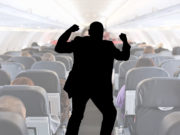
The highest levels of safety are achieved when stakeholders from across the spectrum of aviation disciplines work together to identify and mitigate risk. Pilots, mechanics, flight attendants, dispatchers, schedulers, air traffic controllers, ramp movement coordinators, ground handlers, weather forecasters, regulators and numerous other individuals and organizations have roles to play in ensuring the safety of passengers, crew, cargo and aircraft.
Nine years ago, an advisory circular (AC 700-012) on passenger safety briefings issued by Transport Canada said that: “Passenger surveys suggest that the travelling public want the responsibility for their safety to be a shared concern, involving the air operator, the crew, the passenger and [the regulator].” (emphasis added)
But I think one of those groups — passengers — is often overlooked and should play a greater role.
In some situations, that role is obvious. Passengers who insist on grabbing their carry-on baggage during emergency airplane evacuations can slow down the evacuation, risk damaging the escape slides, and endanger their own lives and the lives of other passengers and the crew.
Other situations are less obvious. Anyone who spends any time on the internet has probably been exposed to a video or two showing lithium battery–powered laptops going into thermal runaway at an airport gate, but how many passengers realize that items commonly packed in checked bags may fall into the category of dangerous goods? And do passengers think twice about what could happen when an aerosol is packed in a suitcase with an overcharged or damaged spare laptop battery?
The industry needs to figure out a way to get passengers more involved in their own safety. That could mean using pre-flight, pre-arrival and emergency landing safety briefings to instruct passengers to leave behind their carry-ons in case of an emergency evacuation — and not holding off on those instructions until the emergency exits are being opened and the slides are deploying. That could mean doing more to encourage passengers to keep track of their personal electronic devices in flight so they don’t get stuck in a seat track and get damaged. And it could mean working with smart bag manufacturers to explain to passengers why it’s important to take the battery out of a bag that’s to be checked.
As always, we’re all in this together.

